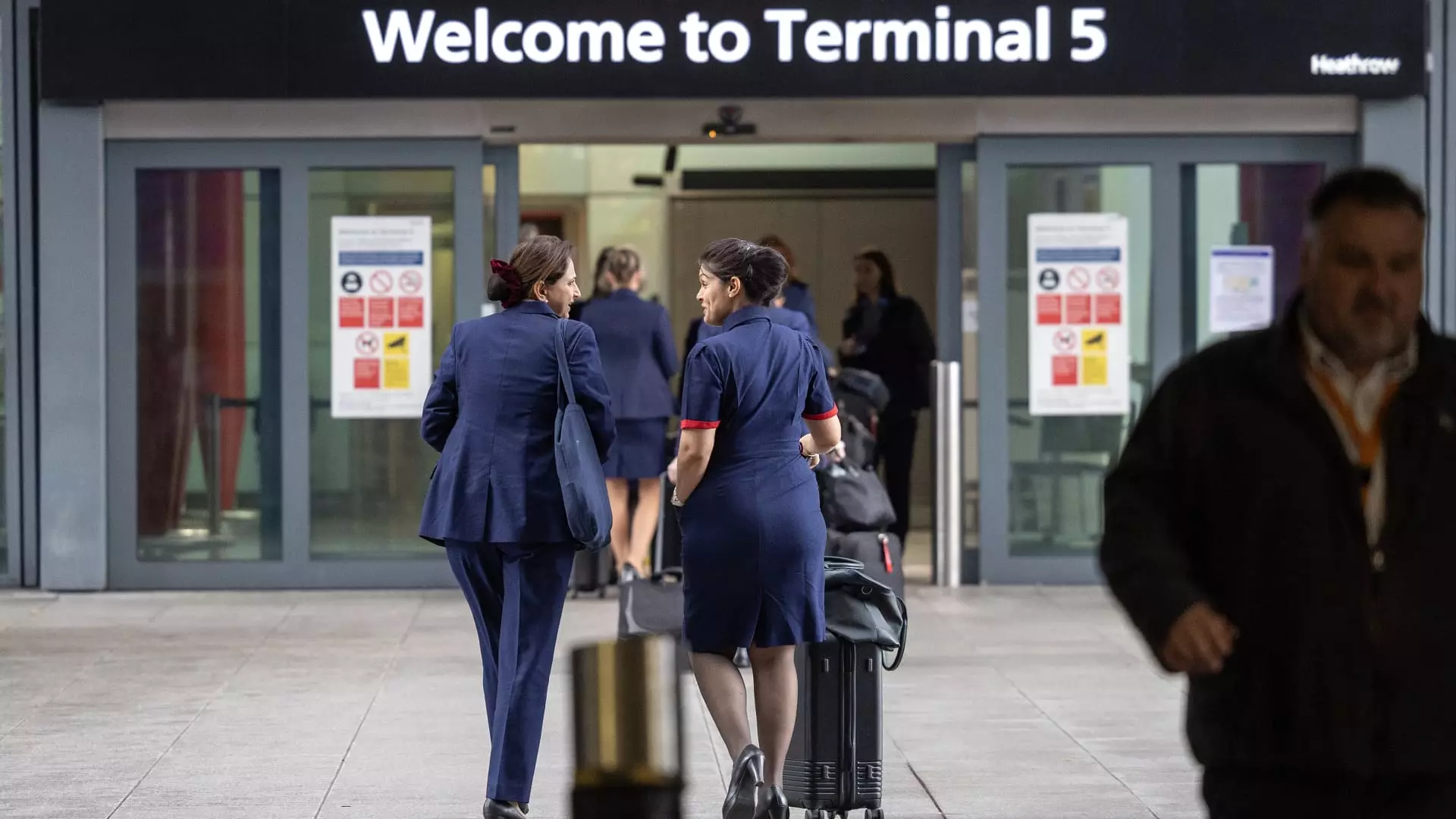Heathrow Airport, a pivotal hub for international travel and Europe’s busiest airport, recently faced significant turmoil following a power outage caused by a fire at a nearby electrical substation. Reopening on Saturday, the airport resumed operations after a harrowing day of cancellations, with over 800 flights affected. This situation is not just a logistical nightmare for airlines and travelers alike—it’s a critical moment that exposes underlying vulnerabilities in essential infrastructure. As flights began to recommence late Friday evening, travelers were left grappling with not only significant delays but a sense of uncertainty and frustration.
The sheer volume of cancellations and the scramble to accommodate stranded passengers reveal much about the airport’s operational resilience. Airlines, especially British Airways, bore the brunt of the disruption, canceling more than half of their scheduled flights. The strain on the system highlighted not merely the inconvenience caused to individual travelers but also raised essential questions regarding the airport’s preparedness for unexpected crises.
Power Supply and Infrastructure Dependence
The National Grid reported a restoration of power, allowing operations to gradually return to normal. However, the incident raised serious concerns about Heathrow’s structural dependence on a single power source. Critics have voiced their opinions on the lack of redundancy in the airport’s energy supply, with Willie Walsh, former British Airways CEO, calling it a „total planning failure.“ Such statements reflect a broader issue in aviation infrastructure resilience, calling for a reevaluation of how essential services should be safeguarded against unforeseen disruptions.
As operations resumed, Heathrow’s management faced scrutiny regarding the adequacy of their contingency plans. The fire that prompted this widespread disruption was not an act of sabotage, according to London’s Metropolitan Police. Yet, the fact that it was able to create such significant chaos reveals severe cracks in how vital national infrastructure is safeguarded. The situation emphasizes the necessity for airports and utilities to adopt more robust frameworks that account for both unforeseen incidents and the escalating demands of international travel.
Airlines Navigate the Recovery
Airlines, including Virgin Atlantic and British Airways, began prior preparations to minimize the impact of the disruption on travelers. British Airways indicated a cautious optimism by forecasting that 85% of their operations would run as scheduled on Saturday. They also promised flexible rebooking options for passengers impacted by the outage. Taking proactive measures to accommodate their customers demonstrated a commitment to service excellence amidst chaos. Still, it’s disheartening to note that passengers were left scrambling for answers amid a lack of timely communication during the initial hours of uncertainty.
The frustration of passengers, compounded by the immediate need for answers and clarity, accentuates an underlying truth: effective communication is vital during crises. The airlines’ promises to contact customers quickly in the event of disruptions underscore the importance of transparency in fostering trust and confidence among travelers.
A Call for Change
This incident could serve as a catalyst for necessary changes within the aviation and infrastructure landscape. Walsh’s remarks shine a light on the broader implications of this incident. If an airport of Heathrow’s caliber struggles with operational continuity during such disturbances, there are clear implications for all airports globally. The onus is now on airport authorities and utility providers to collaborate closely, ensuring that measures are in place to enhance operational resilience.
The aviation sector often shoulders the burden of passenger care costs in the aftermath of infrastructural failures. This reality necessitates a multi-stakeholder approach to responsibility sharing, ensuring that airlines are not solely accountable for disruptions caused by external factors, such as electrical outages. The time has come for a paradigm shift—where infrastructure resilience is prioritized, transparent communication is emphasized, and shared responsibility becomes the norm rather than the exception.
In light of this upheaval, stakeholders must embrace collaboration and innovative solutions, ensuring that critical infrastructure is fortified against similar events in the future. The reopening of Heathrow is a recovery milestone, but it is clear this should also be viewed as an opportunity to reimagine how we protect vital travel hubs from the unexpected. Only through a collective approach can we hope to ensure a smoother and more secure travel experience for millions around the globe.


Napsat komentář